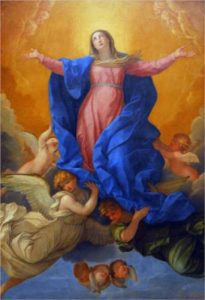Holy Day of Obligation Aug. 15
Bob Reddy – Florida Catholic
The upcoming Solemnity of the Assumption of the Blessed Virgin Mary, to be celebrated Aug. 15, is a particular time in the year to reflect upon the story of eternal hope for the faithful.

Pope Francis said the Assumption (a Holy Day of Obligation) is a time when “the holy faithful people of God express with joy their veneration of the Virgin Mother. They do so in the common liturgy and also in a thousand different ways of piety; and thus, the prophecy of Mary herself comes true: ‘All generations will call me blessed’ (Luke 1:48), because the Lord has regarded His humble handmaid.”
The Assumption of Our Lady into Heaven, in soul and body, is a divine privilege accorded to the Holy Mother of God because of her particular union with Jesus, Pope Francis noted.
“It’s a corporal and spiritual union, which began with the Annunciation and matured throughout Mary’s life, through her singular participation in her Son’s mystery,” the Holy Father continued. “Mary always went with her Son: she went behind Jesus, and so we say she was His first disciple.”
The Catechism of the Catholic Church describes the Assumption in this way: “The Immaculate Virgin, when the course of her earthly life was finished, was taken up body and soul into heavenly glory, and exalted by the Lord as Queen over all things, so that she might be more fully conformed to her Son, the Lord of lords and conqueror of death.”
Pope Francis said that while the Blessed Virgin has entered into heavenly glory, this does not mean that She is distant or detached from us; “rather Mary accompanies us, struggles with us, and sustains Christians in their fight against the forces of evil. The stupendous reality of Mary’s Assumption manifests and confirms the unity of the human person, and it reminds us that we are called to serve and glorify God with all our being, soul and body. To serve God only with the body would be an action of slaves; to serve God only with the soul would be against our human nature.”
This Feast of the Assumption of the Blessed Virgin Mary is the oldest celebration of Our Lady. The original celebration was known as the “Memory of Mary” or “Falling Asleep” of Mary for it initially centered on the end of her earthly existence, commonly known as her “dormition.”
Soon the name was changed to the “Assumption of Mary,” since there was much more to the feast than the end of her earthly life. The belief that Mary had been taken up, body and soul, into heaven dates back to the Apostles themselves.
Clear from the beginning was that there were no relics of Mary to be venerated, and that an empty tomb stood on the edge of Jerusalem near the site of the end of her earthly existence or dormition. That location also soon became a place of pilgrimage. (Today, the Benedictine Abbey of the Dormition of Mary stands on the spot.)
In 1950, Pope Pius XII proclaimed the Assumption of Mary a dogma of the Catholic Church, therefore, an ancient belief became Catholic Doctrine and the Assumption was declared a truth revealed by God.
The declaration of the dogma was to “make our belief in our own resurrection stronger and render it more effective,” Pope Pius XII stated in a proclamation.
The proclamation went on to say that the definition of the Assumption “will contribute in no small way to the advantage of human society, since it (reflects and builds up) the glory of the Most Blessed Trinity, to which the Blessed Mother of God is bound by such singular bonds.”
It was also expected that the faithful would be stirred up to a stronger piety toward their heavenly Mother; And that those who meditate upon the glorious example Mary offers be more and more convinced of the value of a human life entirely devoted to carrying out the heavenly Father’s will and to bringing good to others.
Pope Francis said the current devotion that the faithful throughout the world have toward the Blessed Virgin confirms, the earlier expectations of Pope Pius XII.





